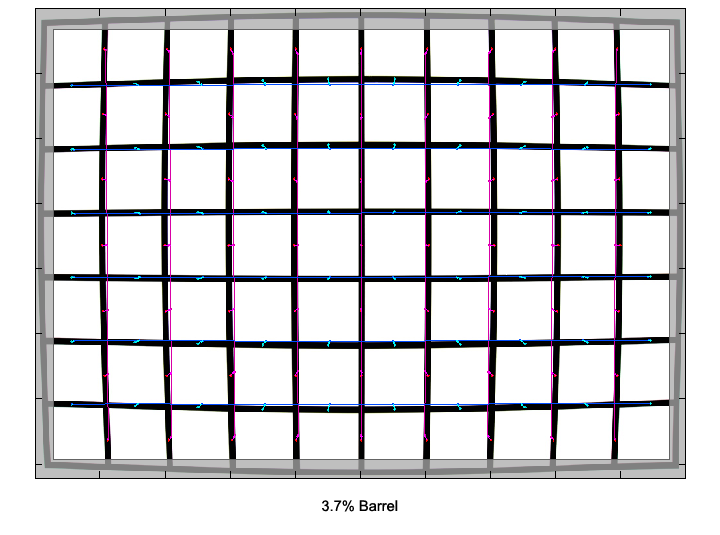|
Page 2 of 3

Distortion
The lens shows barrel type distortion throughout the whole zoom range. It is very pronounced at the short end of the zoom range and decreases to a lower amount by zooming in.
|
Move the mouse cursor over the focal length text marks below to observe the respective distortion
|
| 18mm |
21mm |
28mm |
35mm |
|

|
The chart above has a real-world size of about 120x80cm.
The image below gives an impression of the impact of high distortion on real-world subjects.

Vignetting
Vignetting is unsurprisingly most pronounced at the shortest focal length and the largest aperture. As usual, stopping down reduces the amount of light fall-off towards the corners, but it remains above half a stop at short focal lengths, even with small apertures. For most subjects, however, this should not be an issue anymore.
We're performing our vignetting analysis based on
(uncorrected) JPEGs straight from the camera. The JPG engine of the Nikon D3x features a rather flat
gradation curve, thus has a moderate contrast characteristic, resulting in comparatively low vignetting figures - the
corresponding Canon figures are roughly 40% higher due to the more
aggressive default contrast setting.

MTF (resolution)
At the shortest focal length, the lens shows excellent resolution in the image center straight from the maximum aperture. The image borders show very good sharpness throughout the tested aperture range, while the extreme corners start a little lower, but also improve to good resolution at medium apertures.
At 21mm, the chart looks similar with excellent resolution in the image center and very good borders and extreme corners already at the largest aperture.
Zooming in, the center resolution drops a little. At 28mm it is down to very good figures wide open, but improves to excellent values by stopping down. The borders and corners show good resolution wide open and slightly stopped down. The lens needs to be set to f/8 to deliver very good resolution here.
At the longest focal length, resolution across the frame drops even more. In the image center, the lens only just reaches excellent figures stopped down to f/8. The borders show good resolution wide open and increase to very good figures at f/8, while the extreme corners are just fair at the largest aperture and don't get beyond good figures stopped down.
Please note that the MTF results are not directly comparable across the different systems!
Below is a simplified summary of the formal findings. The chart shows line widths
per picture height (LW/PH) which can be taken as a measure for sharpness.
If you want to know more about the MTF50 figures you may check out the corresponding
Imatest Explanations

Chromatic Aberrations (CAs)
Lateral CAs (color shadows at harsh contrast transitions) are well controlled for such a wide lens. The largest amount is visible at the shortest focal length and the largest aperture. Zooming in and stopping down reduces the amount of CAs to lower levels.
Note that CAs can easily be corrected in software or by the camera itself (most modern Nikon DSLRs remove CAs themselves if you shoot JPGs).

|